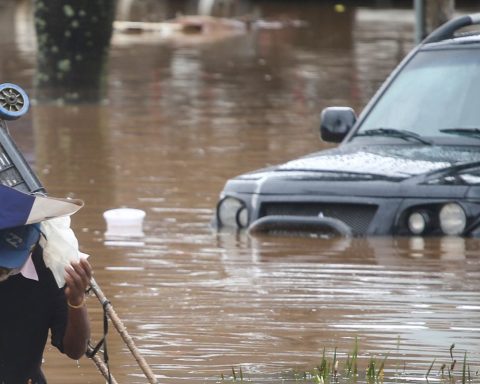June 17, 2023, 4:00 AM
June 17, 2023, 4:00 AM
By Deysi Mamani Tola, economist
Today everyone believes they are gurus of the economy exposing omens and readings lacking in support, despite this, its diffusion is wide in different media. Given this, I will seek to expose the current situation based on observed data.
First of all, it is important to be aware of the situation the economy was in in 2020 in order to recognize the effort required to get it out of that hole; think seriously about the external context and the internal conflicts that harmed the economic recovery; and keep in mind the political conflict that delays the execution of opportune actions.
The situation in 2020 was critical for two reasons: the pandemic and the paralysis of the economy, which led to a drop in GDP of 8.7%, a situation not seen since 1963. Public finances registered a deficit of 12.7% of the GDP and a current deficit of 6.1%, which led to a significant increase in domestic debt. Unemployment rose to 8.4%, and in the month of May it reached a peak of 11.2%. Extreme and moderate poverty increased as well as inequality. Added to this is the lack of attention to the health crisis, resulting in a high mortality rate.
The current Government took command when the country was going through this difficult economic and social situation, embarking on the challenge of reversing it, which began with the plan to fight the covid-19 pandemic, acquiring vaccines, providing detection tests and providing staff the health centers for the control and care of the sick, because it had to provide health security to rebuild the economy. As a result, the last wave of covid-19 registered a mortality rate of 0.2%.
On the economic level, various studies indicate that any economic crisis leaves consequences for economic activity, because permanent product losses are suffered; recovery is not automatic. In the Bolivian case, to get out of the crisis, the Government began by providing resources to households through the Bono against Hunger, the return of contributions, reactivated public investment, channeled resources through loans at low interest rates, among others. Thus, in 2021, GDP recovered by growing by 6.1%, whose main engine was domestic demand. Unemployment, poverty and inequality were reduced. Public finances continued to register deficits, but to a lesser extent.
In 2022, this recovery would be given a boost, but the results were undermined by the external context marked by the effects of the war in Ukraine and the internal conflict promoted by the Cruceño Civic Committee with 36 days of unemployment. GDP growth was 3.5% in 2022, less than the 4.3% registered in the third quarter due to the conflicts in Santa Cruz in the last quarter. Had it not been for this, growth would have exceeded 4%.
The same thing happened in the fiscal result, which closed the 2022 administration with a deficit of 7.1% of GDP and the current balance with a value close to equilibrium of -0.2% of GDP, which would be less if it were not due to the war in Ukraine and the confinement in China, which made the cost of fuel imports more expensive, not only due to higher oil prices, but also due to high transportation and logistics costs. With the fuel subsidy, the higher costs translated into more expenses for the State so as not to affect the purchasing power of households. In other countries, on the contrary, the overflow of prices caused the population to rise up in protest; According to BBC News World, between January and September more than 90 countries took to the streets to protest the price or availability of fuel.
Compared to 2023, the economy continues to grow. As of March, unemployment was 4.3%, lower than that observed in March 2022 (5.3%), deposits and loans register growth of 2% and 8%, respectively, in relation to March 2022 In foreign trade, the first quarter was affected by the conflicts in the neighboring country of Peru, however, in the month of April we recorded a trade surplus of 71 million dollars. As of April, a global and current surplus was registered. The Central Bank of Bolivia points out that the demand for dollars is already regularizing, a problem that was encountered due to the delay in the approval of the Gold Law.
The external context is complicated, the delay in the approval of national laws does not help the economy, it harms it, but even in this scenario, the economy continues to grow.

















